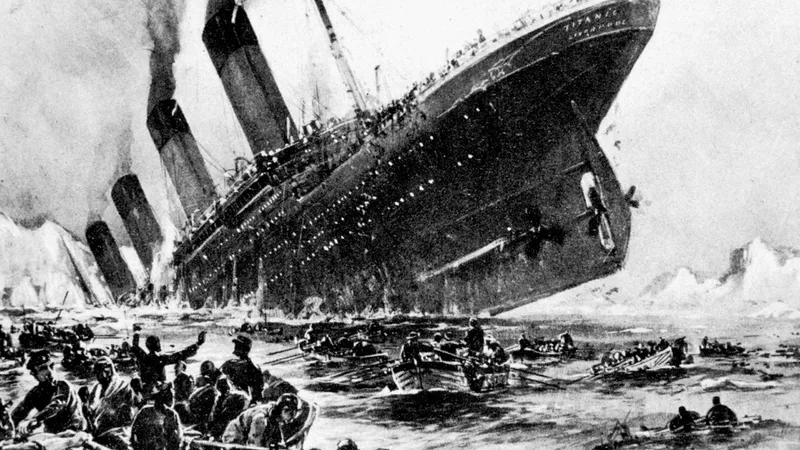On April 10, 1912, the RMS Titanic, a triumph of industrial-age engineering, left Southampton, England, on her maiden voyage. This journey, filled with aspirations and attended by both pomp and circumstance, was destined to become a defining moment of the early twentieth century—a tragic saga engraved deeply in the collective memory of the world.
A Floating Palace Sets Sail:
The Titanic was not merely a ship; it was the epitome of luxury and technological innovation. Stretching over 882 feet and outfitted with opulent accommodations, it was the largest ship afloat at the time. The interiors, from the grand staircase to the lavish dining rooms, were designed to offer an unparalleled experience, reflecting the height of Edwardian luxury.
Aboard the Ill-Fated Liner:
The passenger list was a snapshot of the era’s social hierarchy—affluent magnates like John Jacob Astor IV mingled with emigrants bound for the United States, all seeking new beginnings. As the Titanic carved her path through the North Atlantic, excitement and joy permeated the air, with passengers unaware of the impending doom.
Tragedy Strikes:
The voyage proceeded without incident for several days, the ocean liner gliding majestically across calm seas. However, the serenity was shattered late on the night of April 14, when the Titanic collided with an iceberg. The impact was catastrophic, tearing a gash in the ship’s side and sealing her tragic fate.
The Sinking:
Panic and disbelief gripped the Titanic as it became apparent that the ship would indeed sink. The crew frantically launched lifeboats, many of which were woefully inadequate to accommodate all aboard. In the early hours of April 15, the “unsinkable” ship broke apart and descended into the icy depths of the Atlantic, taking over 1,500 lives with her.

Aftermath and Reflection:
The world reeled at the news of the Titanic’s sinking. The tragedy prompted immediate international outcry and led to significant changes in maritime laws, including improved safety protocols and lifeboat requirements. The disaster highlighted the fatal perils of human hubris and the limitations of modern engineering.
Heroism Amidst Horror:
Despite the horror, the tragedy also bore witness to incredible acts of heroism and sacrifice. Stories of the band playing calming music, tales of women and children being loaded into lifeboats, and accounts of strangers helping strangers provided some solace amidst the sorrow, showcasing the resilience and bravery of the human spirit.
Legacy of the Titanic:
Today, the story of the Titanic resonates as a powerful narrative of human ambition, tragedy, and heroism. Memorials and exhibitions, as well as books and films, continue to commemorate this historic event, reflecting on the lessons learned and remembering those who perished. The Titanic remains a poignant symbol of both human achievement and vulnerability, a somber reminder that nature can still overpower even the greatest creations of mankind.
Conclusion:
As we look back on the Titanic’s voyage over a century later, we are reminded of the enduring lessons it imparts on humility, safety, and the human capacity for courage in the face of overwhelming odds. The Titanic’s story, marked by both grandeur and tragedy, continues to captivate and haunt the imagination of generations around the globe.







What do you think?
Show comments / Leave a comment